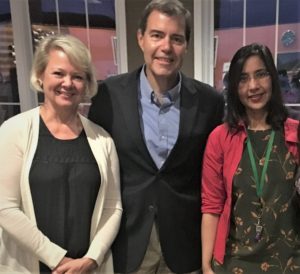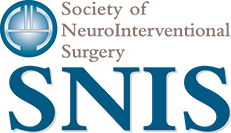Strokes can materialize in unexpected ways. Such was the case for Phillip Hamilton, a professor of history at Christopher Newport University in Newport News, Va., whose stroke possibly resulted from a neck injury that he doesn’t remember sustaining. The injury caused a clot in his carotid artery, which then traveled to his brain.
It was January 3, 2019, a few days before the new semester at CNU was scheduled to begin. Phil, age 57, had come home for lunch when the stroke occurred.
“There were no warning signs at all,” he recalls. “One minute I was fine, the next minute my wife was calling 9-1-1.”
Phil says he is lucky that his wife, Chris, was home. He didn’t feel that anything major was wrong with him and just wanted to lie down until he felt better. However, Chris immediately recognized the symptoms of stroke, which may have saved Phil’s life.
“My wife told the first responders that I was having a stroke, and they knew what to do,” he says. “They got me into the ambulance right away and I was at the hospital being attended to by emergency physicians within 15 minutes.”
EMS took Phil to Riverside Hospital — a Level 1 stroke center — which was just a mile away.
“We went there because it was the closest hospital, but we had the good fortune of it also being a Level 1 stroke center,” he says. “That means people knew exactly what to do to help me.”
 Phil had a procedure known as a mechanical thrombectomy performed by Dr. Pankajavalli Ramakrishnan, a neurointerventionalist at Riverside, who he credits as being his other savior that day. The minimally invasive procedure removed the clot in Phil’s brain to reestablish blood flow.
Phil had a procedure known as a mechanical thrombectomy performed by Dr. Pankajavalli Ramakrishnan, a neurointerventionalist at Riverside, who he credits as being his other savior that day. The minimally invasive procedure removed the clot in Phil’s brain to reestablish blood flow.
He was in the intensive care unit for about a day and a half, then moved to a regular room. After four days, Phil was released with only minor deficits in hand movement, which was treated and resolved through just a few visits to an occupational therapist. He credits his quick and full recovery to being with the right people in the right place at the right time.
“It is vital that when the first responders know they are dealing with a stroke that they take the patient immediately to a level 1 stroke center, or at least a level 2 center if a level 1 is too far away, because that gives the patients the best chance for a good outcome like mine,” Phil says.
Today, Phil is back at work teaching young minds at Christopher Newport University. But he’s always happy to do a second, important job of raising awareness about stroke and debunking some of the myths people may hold about the condition.
“I let people know the important role that time plays in surviving a stroke,” he says. “Getting to care quickly is everything. I also tell them, ‘This could happen to you.’ I thought that stroke was a condition that only happened to elderly people, or people in poor health. I thought I wouldn’t have to worry about a stroke for another 20 years.”
Phil is also still in touch with Dr. Ramakrishnan who saved his life.
“She is a wonderful woman and an amazing doctor,” he says. “But she can’t be everywhere. That’s why it’s so important to push forward legislative or regulatory solutions that will help get stroke patients to highly qualified stroke centers as quickly as possible.”

 Phil had a procedure known as a mechanical thrombectomy performed by
Phil had a procedure known as a mechanical thrombectomy performed by 